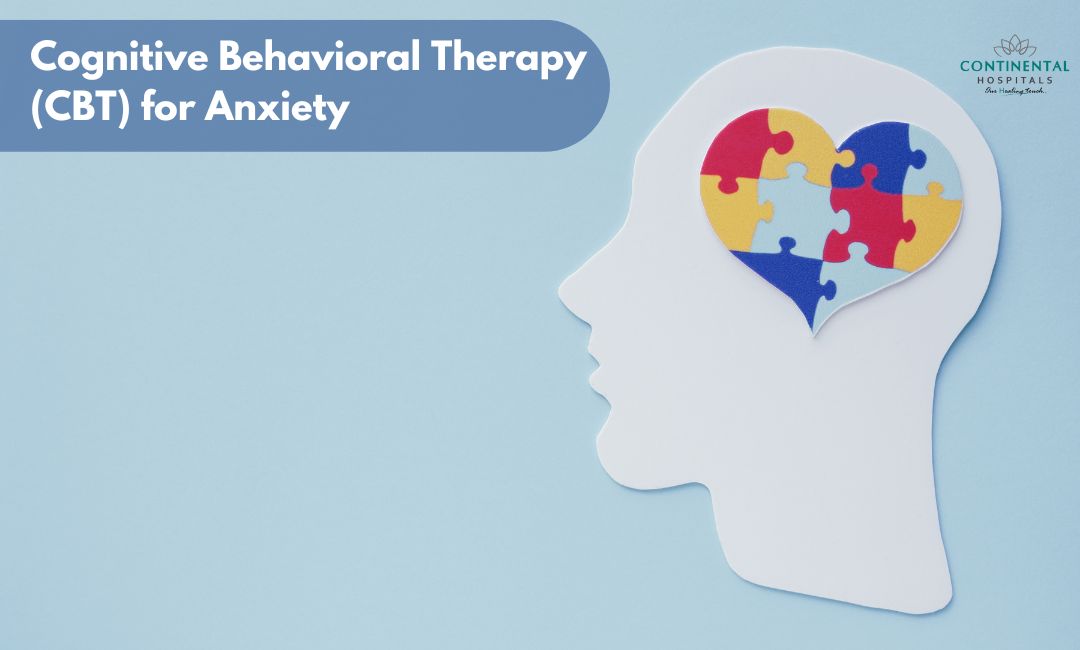Anxiety disorders affect millions of people worldwide, impacting their daily lives and overall well-being. However, amidst the chaos of anxious thoughts and emotions, there lies a beacon of hope: Cognitive Behavioral Therapy (CBT). This therapeutic approach has garnered immense recognition for its effectiveness in treating various anxiety disorders. In this blog post, we delve into the fundamentals of CBT for anxiety, exploring its principles, techniques, and practical applications in conquering the debilitating grip of anxiety.
Understanding Anxiety and Its Manifestations:
Before delving into CBT, it's crucial to understand anxiety and its manifestations. Anxiety is more than just feeling stressed or worried; it encompasses a spectrum of emotions ranging from mild unease to overwhelming fear. Common manifestations include excessive worrying, restlessness, muscle tension, irritability, and difficulty concentrating. These symptoms can significantly impair one's ability to function in daily life, affecting relationships, work, and overall quality of life.
What's CBT?
CBT stands for Cognitive Behavioral Therapy. It is a widely used psychotherapeutic approach that aims to help individuals identify and change negative or unhealthy thought patterns and behaviors. CBT is based on the premise that our thoughts, feelings, and behaviors are interconnected and that changing one can lead to changes in the others. It is typically a short-term, goal-oriented therapy that focuses on addressing specific problems and developing practical skills to cope with them. CBT is often used to treat various mental health issues, including depression, anxiety disorders, PTSD, OCD, and substance abuse, among others.
To know more about Cognitive Behavioral Therapy, consult with a psychologist.
🥗 Healthy Plate Challenge
🍽 Add Your Favorite Dish
Pick Your 6 favorite foods, eat, and see the results.Drag & drop foods onto your plate.
Drop Food Here
Cognitive Behavioral Therapy Techniques
CBT for anxiety encompasses a variety of techniques and interventions tailored to individual needs and preferences. Some common practical applications include:
Identifying and challenging negative thoughts: This involves helping individuals become aware of their negative or irrational thoughts and challenging them with evidence-based reasoning. This technique helps clients develop more balanced and realistic ways of thinking.
Cognitive restructuring: This technique involves identifying and replacing distorted or irrational thoughts with more accurate and constructive ones. It aims to change the underlying beliefs that contribute to negative thinking patterns.
Behavioral activation: This technique focuses on increasing engagement in positive and rewarding activities to counteract feelings of depression or low mood. Clients are encouraged to schedule and participate in activities that they enjoy or find fulfilling, even if they initially lack motivation.
Exposure therapy: This technique is often used to treat anxiety disorders, such as phobias or PTSD. It involves gradually exposing individuals to the source of their fear or trauma in a safe and controlled environment, helping them to confront and overcome their anxiety over time.
Relaxation techniques: These techniques, such as deep breathing exercises, progressive muscle relaxation, or mindfulness meditation, help individuals reduce physiological arousal and manage stress more effectively.
Problem-solving skills: CBT often teaches practical problem-solving skills to help individuals address current challenges or stressors in their lives. This involves breaking down problems into manageable steps, generating potential solutions, and evaluating their effectiveness.
Assertiveness training: For individuals struggling with communication or interpersonal issues, assertiveness training can be helpful. This involves learning how to express thoughts, feelings, and needs directly and respectfully, while also setting boundaries and standing up for oneself.
Graded exposure: This technique is particularly useful for addressing avoidance behaviors commonly associated with anxiety disorders. It involves gradually exposing individuals to feared situations or stimuli, starting with less anxiety-provoking scenarios and progressing to more challenging ones as confidence builds.
Homework assignments: Therapists often assign homework between sessions to reinforce learning and practice new skills outside of the therapy room. These assignments may include keeping thought records, practicing relaxation techniques, or implementing problem-solving strategies in real-life situations.
Self-monitoring: Keeping track of thoughts, feelings, and behaviors using journals or worksheets can help individuals gain insight into patterns and triggers that contribute to their difficulties. This self-awareness is an essential first step toward making meaningful changes.
Cognitive Behavioral Therapy (CBT) offers a beacon of hope for individuals struggling with anxiety disorders. By addressing the underlying cognitive and behavioral patterns that contribute to anxiety, CBT empowers individuals to challenge their fears, regain control, and live fulfilling lives. Through its core principles and practical applications, CBT serves as a cornerstone in the treatment of anxiety, offering a path to healing and transformation. If you or someone you know is battling anxiety, consider exploring the transformative power of CBT and embarking on a journey towards greater well-being and resilience.
To know more about Cognitive Behavioral Therapy, consult with a psychologist.
Related Blog Articles-
1. Coping with Depression During Major Life Changes
2. 10 Tips and Techniques to Boost Your Mental Health
.webp)














